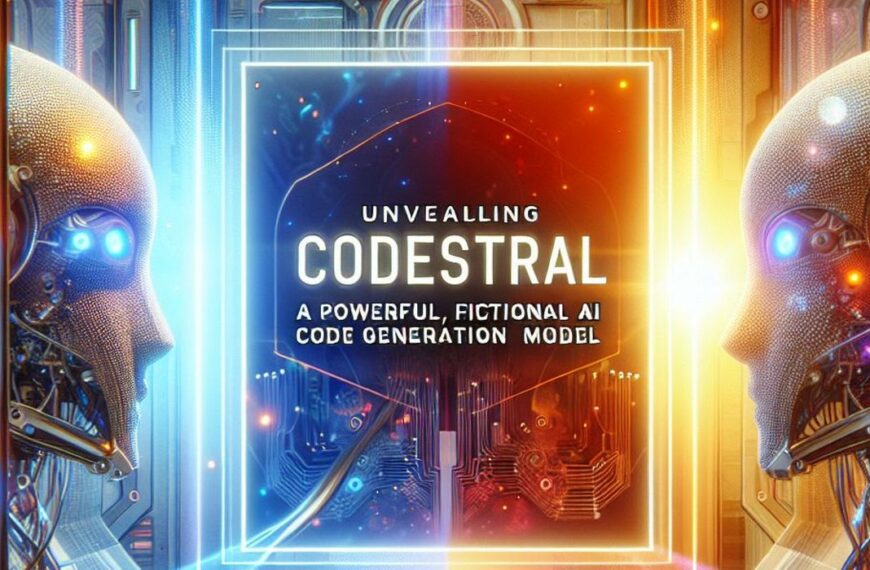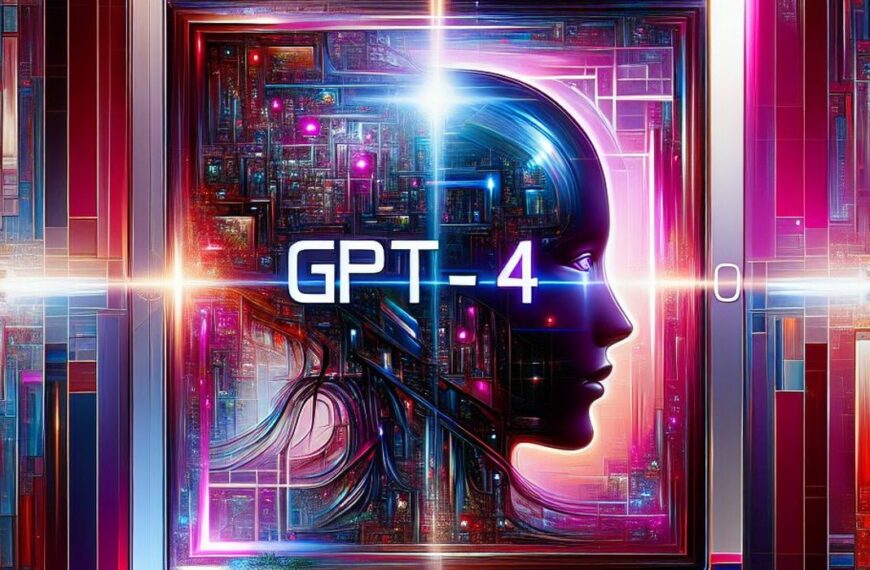Microsoft has released Phi-2, the latest iteration of its line of small yet powerful language models. With just 2.7 billion parameters, Phi-2 demonstrates remarkable reasoning and language understanding capabilities, outperforming models over 25 times its size on complex benchmarks. Phi-2 achieves its breakthrough performance through innovations in both model design and training. Researchers focused on high-quality, textbook-style data to teach Phi-2 reasoning and common sense. Strategic scaling techniques also allowed knowledge transfer from the 1.3B parameter Phi-1.5 model, accelerating training convergence. Together, these advances unlocked state-of-the-art language mastery within an efficient 2.7 billion parameter package.
Table of Contents
Introduction
The release of Phi-2 signals a monumental shift in AI development, proving that performance isn’t solely tied to model size. This compact yet extraordinarily capable model points to a future powered by efficient, inclusive AI.
The Imminent Future of Artificial Intelligence with Phi-2’s Integration
By integrating Phi-2 into their model catalogs and development platforms, tech leaders like Microsoft enable broader access to advanced AI for researchers and developers. As innovations allow ever-greater language mastery per parameter, compact yet powerful models like Phi-2 will become vital building blocks for real-world AI applications.
Reflecting on the Potential and Reach of Microsoft’s Compact AI Model, Phi-2
Microsoft designed Phi-2 as an accessible playground for AI research and experimentation. Its surprising power within a small parameter budget offers fertile ground for trailblazing techniques in interpretability, safety mechanisms, and specialized fine-tuning. As researchers harness Phi-2’s capabilities to push boundaries, we edge closer to AI that is as ethical as it is brilliant.
Evolution of Microsoft’s Language Models: From Phi-1 to Phi-2
Phi-2 caps off a series of breakthrough Microsoft language models optimized for efficiency. Building upon the coding mastery of 1.3B parameter Phi-1 and reasoning skills of Phi-1.5, researchers incorporated strategic scaling and training innovations to unlock Phi-2’s immense power, cementing state-of-the-art language performance in a compact package.
An Overview of Microsoft’s Pioneering Small AI Model, Phi-2
Despite having just 2.7 billion parameters, Phi-2 achieves remarkable language mastery. On academic benchmarks spanning reasoning, coding, math, and language understanding, it matches or tops the performance of models up to 25 times its size. This efficiency paradigm bucks the trend of ever-larger models to push the frontier of possible applications for advanced language intelligence.As an efficient base model with advanced capabilities, Phi-2 signals a new direction where compact yet extraordinarily skilled models become fundamental building blocks within the AI ecosystem, rather than purely massive models at the bleeding edge.Phi-2 demonstrates that size and skill can be decoupled in language model development through strategic training choices. This small yet mighty model matches gigantic counterparts via innovations in architecture, dataset curation, and transfer learning. In doing so, Phi-2 offers a more inclusive foundation for real-world AI compared to costly custom GPT-4 models.
The Evolution of Microsoft’s Language Models: From Phi-1 to Phi-2
Microsoft Research rapidly iterated from coding-focused Phi-1 to well-rounded reasoning and language mastery in Phi-2. Each version applies insights on efficient training to unlock greater capability per parameter, culminating in Phi-2’s groundbreaking performance within its 2.7B parameter budget.Building upon existing open-source models, Microsoft leveraged knowledge transfer and tailored data to efficiently scale capability, producing the 1.3B parameter Phi-1.5 model with surprisingly advanced reasoning and language skills. Researchers then integrated these insights to develop Phi-2, which efficiently achieves expert-level mastery. Rather than purely pursuing massive models, Phi-2 represents an alternative direction where compact, efficient models form capable foundations for real-world AI. This paradigm provides a more accessible direction to build upon compared to compute-intensive flagship models.
With just 2.7 billion parameters, Phi-2 displays shocking proficiency at language understanding and reasoning, outdoing models over 25 times its size. This skill within such a streamlined model provides fertile ground for innovation.
Phi-2 as a Benchmark in Generative AI: What Sets It Apart?
Despite having under 3 billion parameters, Phi-2 matches or beats AI models with up to 70 billion parameters on benchmarks spanning coding, reasoning, language mastery, and common sense. This efficiency makes it stand out as a surprising new standard in compact yet capable generative AI.
Phi-2 Benchmark Scores
Across complex benchmarks like BigBench, ARC, and “MT-Bench,” Phi-2 demonstrates expert language proficiency unexpected for its 2.7B parameter scale. It exceeds industry benchmarks tailored to stress test reasoning capacity, showcasing efficient state-of-the-art performance. Phi-2 achieves stunning results on academic benchmarks designed to assess model reasoning, language, and coding abilities. Compared to prior compact models and vastly larger counterparts, it demonstrates a game-changing jump highlighting the possibilities of efficient model development.
Unveiling the Power of Phi-2
Phi-2’s Rise Marks a New Era in Artificial Intelligence Innovation
With shocking aptitude packing into its streamlined 2.7B parameters, Phi-2 ushers in an era where compact yet extraordinarily skilled models widen accessibility to advanced AI. Its combination of accessibility and ability points toward AI that promotes inclusion rather than intensifying divides.Despite its petite stature, Phi-2 encompasses immense power – with expert language comprehension and human-like reasoning representing just a fraction of capabilities. This mighty micro-model packs state-of-the-art performance among base language models, presaging new possibilities for real-world AI mastery within modest parameters.
Microsoft Unveils Phi-2: Redefining Efficiency in AI Models
Microsoft Research developed Phi-2 as a case study in pressing the limits of efficiency for language model design. Within 2.7 billion parameters, it packs a shocking combination of state-of-the-art language proficiency, reasoning ability, and common sense mastery that redefines expectations for compact models.
The Efficiency Paradigm: Phi-2 as a Cost-Effective AI Solution
As an expert system encapsulated within a svelte budget of less than 3 billion parameters, Phi-2 represents a monumental shift towards efficient yet extraordinarily skilled AI. Its superior performance within modest bounds could pioneer a new paradigm emphasizing inclusive and cost-effective language intelligence over massive, unwieldy models.
Benchmarking Success: How Phi-2 Stands Against Bigger Models
Across benchmarks testing key reasoning and language faculties, Phi-2 consistently punches far above its weight, out-competing renowned models with over 25 times its parameters. These wins signal a seismic shift in the competitive landscape where efficient, compact models gain an edge over leading massive counterparts.
Phi-2’s Game-Changing Performance Compared to Its Predecessors
Boasting technical abilities competitive with renowned models of far greater scale, Phi-2 represents a game-changing breakthrough in efficient model design. Its combination of top-tier performance across critical language and reasoning benchmarks within a modest 2.7B parameter package is akin to a masterpiece, shattering expectations of what svelte models can achieve.
The Engine Behind Phi-2
Unlike ever-larger models compromised by mounting safety concerns, Phi-2 was developed hand-in-hand with advanced safety measures guiding its design and training. This emphasis on responsible model development allows Phi-2 to encapsulate great power within its 2.7B source parameters without sacrificing user trust, differentiating it from less transparent models.
Decoding the Training Methods of Phi-2
Phi-2’s shockingly advanced performance within a compact 2.7B package results from a meticulous training approach emphasizing quality over quantity for learning materials and harnessing transfer learning to accelerate convergence. These innovations in strategic data curation and scaled knowledge infusion unlocked Phi-2’s outsized abilities within modest parameters.
Innovative Scaling Techniques that Boosted Phi-2’s Capacities
Microsoft researchers pioneered scaling techniques that transferred learned knowledge from Phi-1.5 into the streamlined 2.7B Phi-2 model. This infusion of expert insights within limited parameters boosted Phi-2’s capacities, enabling it to master complex reasoning and language tasks competitive with industry-leading models over 25 times larger.
Microsoft’s Strategic Approach to Training Smaller, Powerful Language Models
Rather than model scale, Microsoft prioritized strategic choices – textbook-quality data, safety-focused development, and transfer learning – for unlocking Phi-2’s disproportional power within its 2.7B parameters. This careful regime resulted in accelerated training convergence and ultimately, expert-level mastery competitive with leading models.
Phi-2 in Context: Industry Implications
By releasing Phi-2 in their model catalog alongside specialized services for customization, Microsoft enables professionals across industries to readily experiment with and tailor this powerful compact model. With adjustments, Phi-2 could soon pioneer a wave of efficient yet capable AI across professional landscapes.
Microsoft’s Models as a Service: Introducing Flexible AI Options
Microsoft incorporates Phi-2 within its suite of flexible “Model as a Service” options spanning platforms like Azure OpenAI and Azure Machine Learning Studio. This integration provides tailored tooling so that professionals can readily customize compact yet extraordinarily skilled models like Phi-2 for their needs as AI becomes an workplace imperative.
The Phi-2 Factor: How It Surpasses Google’s Gemini Nano
Across benchmarks, Phi-2 consistently out-competes Google’s Gemini Nano model despite the latter’s larger parameter count. This signals Phi-2’s greater language mastery and efficiency, secured via Microsoft’s tailored training approach rather than model scale alone. Phi-2 hence represents a leap ahead of current AI leaders.
The Role of Small Language Models (SLMs) in the Future of AI
As exemplified by Phi-2, smaller yet extraordinarily skilled models like SLMs could provide a crucial filter for assessing progress in responsible, ethical AI development. Their efficiency also promotes accessibility, aligning with growing community calls for judicious model scaling. Hence SLMs will likely play a pivotal role in guiding future AI.
Technical Exploration of Phi-2
Phi-2 implements an efficient Transformer architecture specialized for language tasks, trained on a tailored 1.4T token dataset. Innovations in scaled transfer learning, safety-focused development, and strategic convergence acceleration unlocked its advanced capabilities within modest 2.7B parameters, enabling language mastery and reasoning competitive with leading models.
The Robustness of Phi-2: Evaluating Its Capabilities and Limitations
Boasting expertise competitive with renowned models across reasoning, language, and coding with under 3B parameters, Phi-2 represents a shocking breakthrough in capability through efficiency. Future analysis can further probe emergent capabilities as well as limitations to guide innovations toward robust language mastery.
The Unique Architecture and Training Details Behind Phi-2’s Success
Microsoft researchers strategically combined innovations in model architecture, knowledge transfer, and tailored training to imbue the compact Phi-2 model with extraordinary language mastery. This efficient yet expert performance highlights the possibility of developing capable and ethical AI without sacrificing user trust through unrelenting model scaling.
Integrating Phi-2 with Microsoft’s Windows AI Studio
By incorporating Phi-2 within Microsoft’s Windows AI Studio alongside specialized tooling for customization, Microsoft empowers users to readily tap into this model’s advanced skills for their own projects. Smooth integration with Windows ecosystems also promotes accessibility to pioneer new techniques leveraging Phi-2’s language intelligence.
Enhancing Usability: Tutorials and Tips
To maximize usability, Microsoft provides free Colab tutorials for accessing Phi-2 alongside guides for optimized local execution. Additional Microsoft tutorials detail customization techniques to adapt Phi-2 for specialized tasks, unlocking this compact yet extraordinarily skilled model’s potential for users at all levels.
The Economics of AI Development
Phi-2 represents a new paradigm emphasizing efficient design to make advanced AI economically viable beyond big tech titans, counteracting LLMs’ skyrocketing training costs. Analyzing this compact model’s surprising mastery provides a framework for cost-benefit decisions between size and performance that could shape an AI landscape with greater access and inclusion.
Paving the Road for Future Innovations
By providing Phi-2 through flexible customization platforms, Microsoft enables researchers to springboard new techniques leveraging this surprisingly powerful compact model. Such services lower barriers to innovation, helping disseminate insights from efficient models like Phi-2 to push boundaries beyond massive LLMs toward democratized AI.
Responsible AI and Forward Thinking
Microsoft researchers deliberately implemented safety guardrails and ethical development practices when creating Phi-2, cementing excellent capability alongside reliable accountability within its 2.7B design. By open-sourcing such models, Microsoft helps pave the road toward democratized AI that promotes inclusion and guards against harm.
Conclusion
With its state-of-the-art language mastery competitive with models over 25 times larger, Phi-2 conclusively demonstrates that outstanding AI performance does not intrinsically depend on model scale. This breakthrough compact model presages a near future powered by efficient, accessible AI – a future that Microsoft aims to catalyze by providing Phi-2 for open research.





Leave a Reply